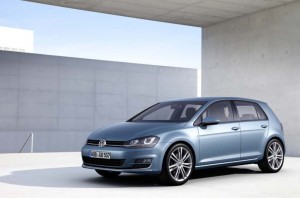After setting its sights on becoming the world’s biggest carmaker six years ago, Volkswagen AG has steadily moved closer to its twin objective of becoming the world’s most profitable automaker, reporting operating income of 11.5 billion euros, or $15 billion, for 2012. The total easily surpassed General Motors Co.’s $7.9 billion and Toyota Motor Corp.’s $11.1 billion.
Martin Winterkorn, chairman of VW’s Board of Management, noted during the company’s annual financial press conference the Volkswagen Group had mastered the challenges posed by a difficult market environment in 2012 by posting record vehicle sales, sales revenue and earnings.
“Volkswagen is feeling the headwinds –especially in Europe. Nevertheless we remain guardedly confident,” he said.
The Volkswagen Group not only turned in a compelling operational performance in the past fiscal year – it also met its targets for major strategic projects: The once-uncertain acquisition of the Porsche brand was completed last August, while Ducati, a legendary motorcycle brand, also joined the Group family, Winterkorn said.
In addition, an alliance between MAN, Scania and Volkswagen Commercial has helped lay the groundwork for growth in that competitive field.
Winterkorn also pointed to Volkswagen’s launch of its new modular “toolkit,” an assortment of new, flexible vehicle platforms that will be shared throughout the various brands in the VW Group, aimed at improving economies of scale while also speeding up product development times. The latest VW Golf is one of the first models to use the MQB architecture specifically developed for compact and midsize vehicles.
“We continued our successful course and further strengthened our market position thanks to our high profitability,” noted Hans Dieter Pötsch, VW’s chief financial officer, who pointed to the “systematic implementation of our Strategy 2018,” the date VW has set to be the world’s best-selling automaker.
When Winterkorn set VW’s ambitious growth targets in 2007, the German auto giant didn’t look much like a world-beater. It had just gone through a disruptive round of job cuts, its namesake brand was barely breaking even, and Toyota earned about $10 billion more than VW.
Winterkorn vowed to raise pretax profit margins to 8% from just 1.7 percent in 2006. And he said VW would boost deliveries to more than 10 million vehicles from 6.2 million in 2007 — in effect adding the sales of a carmaker almost as big as Hyundai Motor Co.
“It’s been a master class in execution,” said Max Warburton, an analyst with Sanford C. Bernstein in Singapore. “Of course there are always elements of luck with corporate plans like this, but mostly they’ve just gone out and done what they said they wanted to do with good products and increasingly competitive prices.”
VW, however, doesn’t dare rest on its laurels. This year’s race for the profitability crown will be tighter and could be significantly impacted by currency fluctuations. With Toyota bouncing back from product recalls and natural disasters, the Japanese manufacturer is set to report 1.7 trillion yen in operating profit this calendar year, according to new estimates from analysts.
The expected increase in Toyota’s profits could beat analysts’ forecasts of 13.2 billion euros for VW, depending on the strength of the yen. At current exchange rates, Toyota’s estimated 2013 profit would be $17.9 billion while Volkswagen’s would be $17.3 billion. The average forecast for GM’s operating profit is $7 billion.
VW is closing in on becoming the biggest automaker by sales. Deliveries surged 11% to 9.07 million passenger vehicles last year, boosted by growth in China and expansion in the U.S. Toyota had 9.75 million deliveries, while GM sold 9.29 million. VW also sold more than 200,000 heavy trucks and buses at its MAN SE and Scania AB.
One wild card is the fact that VW management continues to openly hunt for new acquisition opportunities. Repeated efforts to buy Alfa-Romeo from the Fiat/Chrysler alliance have been rebuffed, but reports from Germany also indicate VW is now also considering acquisitions outside the auto industry.


Porsche’s and Euro sales profit margins account for the significant difference over GM. Auto costs in Europe are often as much as 25% higher than in the U.S. While some of that is VAT, in general the cost of living and incomes in countries like Germany are also higher than in the U.S., resulting in more margin depending on the model mix.